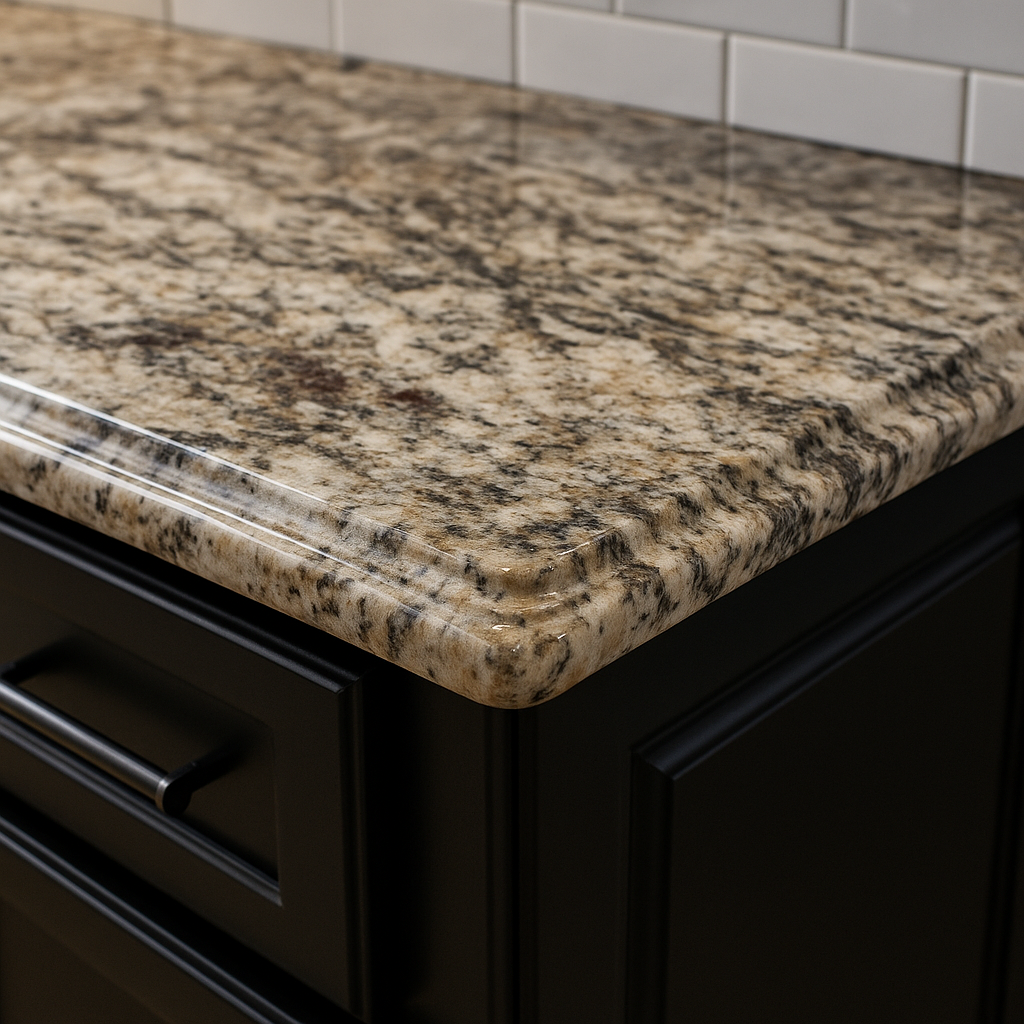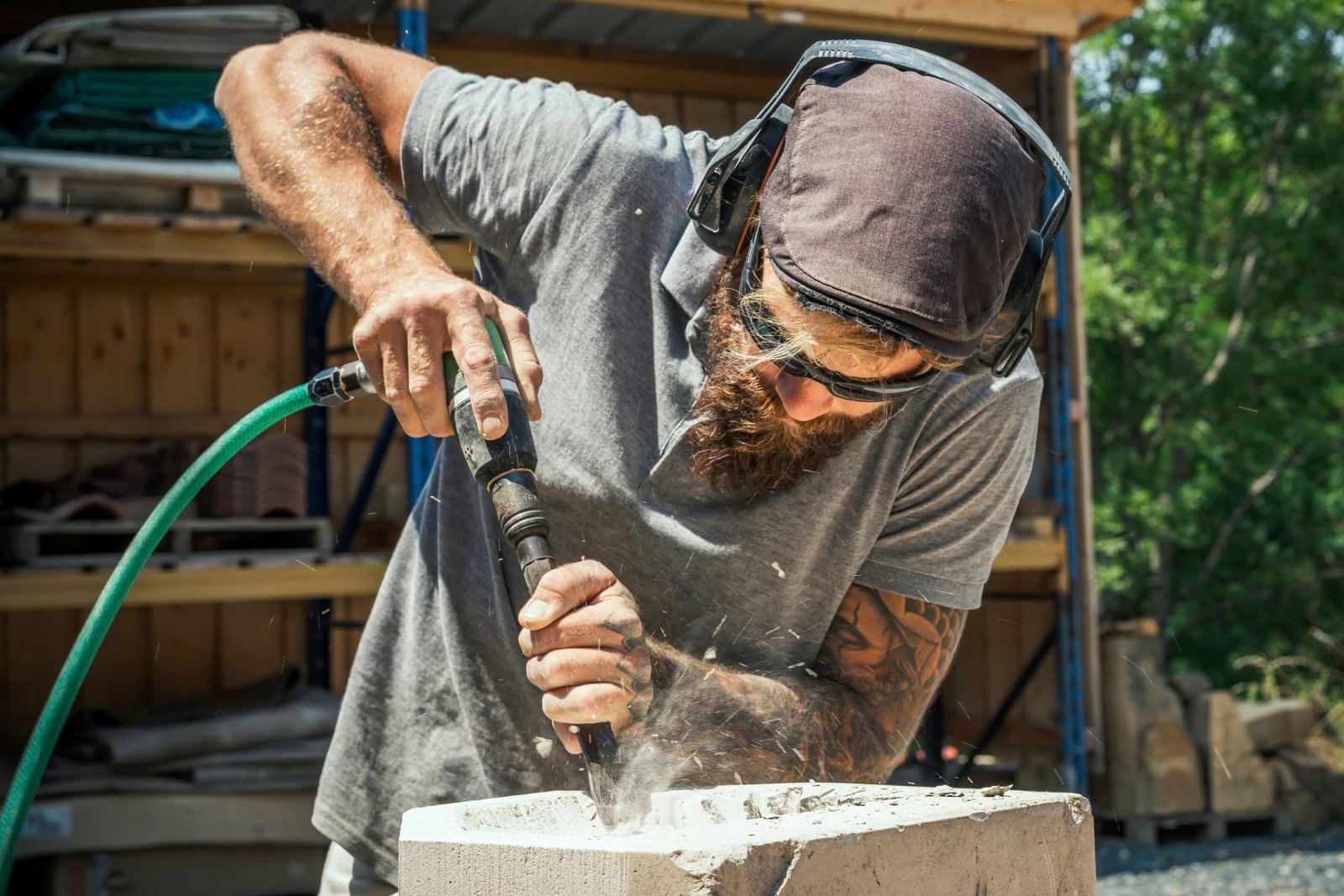
Choosing the right granite countertop for your kitchen or bathroom is a major design decision—but selecting the edge style is just as important.
Choosing the right granite countertop for your kitchen or bathroom is a major design decision—but selecting the edge style is just as important. The edge profile influences the overall aesthetic, functionality, and even cost of your countertop installation. However, many homeowners overlook this detail until late in the renovation process, potentially limiting their design options or delaying project timelines.
So, when exactly should you decide on the edge style in a granite countertop installation? The answer: as early as the templating stage, before fabrication begins.
In this guide, we’ll explore the importance of early edge selection, how different styles affect function and appearance, and how to choose the best edge for your space based on cabinet design, countertop usage, and budget.

Why Edge Style Matters in Granite Countertop Design
The edge of your granite countertop isn’t just a finishing touch—it impacts both the visual feel and practical use of the surface.
Edge profiles affect:
- Aesthetic style (modern vs. traditional)
- Safety (especially with sharp corners)
- Cleaning and maintenance effort
- Durability in high-use zones
- Final granite countertop prices (some edges cost more to fabricate)
Delaying this decision can restrict available choices or increase project costs if changes are requested after fabrication starts.
When Should You Decide on Edge Style?
✅ Ideal Timing: During the Design and Templating Phase
Edge styles must be selected before the slab is cut and fabricated. This usually occurs immediately after your countertop template is created, and before the fabrication shop begins shaping the stone.
Why This Matters:
- Ensures fabrication is accurate and efficient
- Allows your installer to prepare appropriate tools and resources
- Prevents costly reworks or project delays
👉 What Are the Common Installation Styles for a Granite Countertop?
Common Granite Countertop Edge Styles
1. Eased (Straight) Edge
- Simple, clean lines
- Best for modern kitchens
- Low cost and low maintenance
2. Beveled Edge
- Angled cut adds dimension
- Pairs well with contemporary or transitional styles
3. Bullnose Edge
- Fully rounded edge
- Family-friendly and soft in appearance
- Ideal for traditional kitchens or curved islands
4. Ogee Edge
- Elegant, double-curve profile
- Adds sophistication to luxury spaces
- More expensive due to complex fabrication
5. Half Bullnose
- Rounded top, flat bottom
- Showcases granite’s thickness
- Smooth and easy to clean
6. Waterfall Edge
- Vertical continuation of the granite slab
- Bold and modern, especially on islands
- Higher fabrication cost
Your edge profile should align with your granite countertop design vision, cabinet style, and overall kitchen layout.
Factors to Consider When Choosing an Edge Profile
1. Cabinet Style and Height
- Modern flat-panel cabinets pair well with eased or beveled edges
- Raised-panel or ornate cabinetry works better with ogee or bullnose edges
2. Granite Countertop Thickness
- 3cm slabs offer more edge profile options without laminating
- Thicker edges showcase premium granite aesthetics
3. Granite Countertop Color and Pattern
- Busy patterns work best with simple edges
- Dramatic veining (e.g., in Blue Bahia) can be highlighted with ogee or waterfall edges
👉 What Are the Benefits of Combining LED Lighting with a Granite Countertop?
Functional and Safety Considerations
If your countertop will be used by children, elderly residents, or frequent guests, your edge profile should prioritize safety and ease of cleaning.
- Rounded edges (bullnose, half bullnose) are safer and reduce injury risk
- Beveled or straight edges may chip more easily if struck by heavy objects
- Complex profiles may trap crumbs or spills, requiring more frequent granite countertop cleaning
Cost Differences by Edge Style
Different edge styles impact the granite countertop price due to fabrication complexity.
| Edge Style | Cost Impact | Best Use Case |
|---|---|---|
| Eased | Low | Minimalist kitchens, budget builds |
| Beveled | Low–Moderate | Transitional designs |
| Bullnose | Moderate | Family-friendly, traditional spaces |
| Ogee | High | Luxury or decorative kitchen designs |
| Waterfall | Very High | Statement islands and open kitchens |
Choosing the right edge upfront ensures your countertop stays within budget.
How Edge Style Affects Maintenance and Repair
Certain edge styles make granite countertop maintenance easier than others:
- Eased and beveled edges are easiest to clean and polish
- Bullnose and ogee edges may collect dust or food in curves
- Damaged detailed edges (like ogee) are more costly to repair
For high-traffic kitchens or rental properties, simpler edges are more practical.
Integration with Other Design Features
Your edge choice should coordinate with:
- Backsplashes: Rounded edges blend better with tile transitions
- Sink and cooktop cutouts: Eased or beveled edges provide clean lines around appliances
- Lighting effects: LED lighting reflects beautifully off polished edge surfaces
Proper planning ensures that lighting, cabinetry, and countertop features complement one another.
Final Thoughts: Plan Edge Style Early for Seamless Installation
Choosing an edge profile may seem like a small detail, but it significantly impacts the final appearance, cost, and function of your granite countertop. Deciding early—ideally at the templating stage—allows for better coordination with your slab’s cut, cabinet layout, lighting, and overall design.
Whether you’re installing granite in a modern city apartment or a set of adjacent villas, the right edge style helps bring your vision to life.

